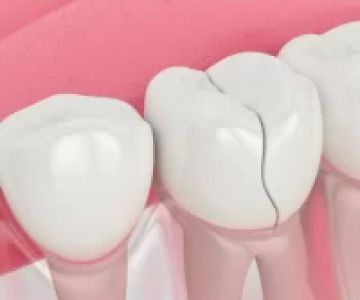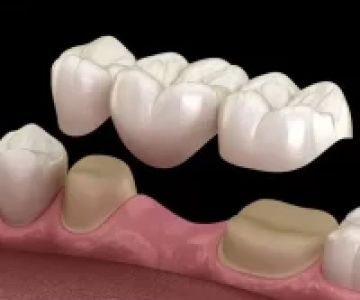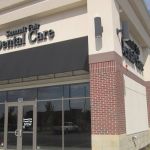How Do You Treat Periodontal Disease? Effective Treatments for Gum Health
- 1. Understanding Periodontal Disease: What You Need to Know
- 2. Symptoms of Periodontal Disease: Early Signs to Watch For
- 3. How to Treat Periodontal Disease: Effective Methods
- 4. Professional Treatments for Periodontal Disease
- 5. Maintaining Gum Health After Periodontal Disease Treatment
1. Understanding Periodontal Disease: What You Need to Know
Periodontal disease, also known as gum disease, is a common condition that affects the tissues surrounding the teeth. It begins with the accumulation of plaque—a sticky film of bacteria—on the teeth, which, if not removed through regular brushing and flossing, can lead to an infection in the gums. Over time, this can result in more severe complications, such as tooth loss.
The disease progresses in stages, from gingivitis (the earliest stage, involving gum inflammation) to more severe forms, such as periodontitis, which can cause irreversible damage to the bone and tissues that support your teeth. Understanding the causes and symptoms of periodontal disease is the first step toward effective treatment and prevention.
2. Symptoms of Periodontal Disease: Early Signs to Watch For
Recognizing the early symptoms of periodontal disease is essential for timely treatment. Common signs include:
- Bleeding Gums: Gums that bleed when brushing or flossing are one of the earliest signs of gum disease.
- Bad Breath: Persistent bad breath or a bad taste in the mouth can be a sign of an infection in the gums.
- Receding Gums: If your gums start to pull away from your teeth, exposing more of your tooth surface, this could indicate periodontal disease.
- Loose Teeth: In more advanced stages, periodontal disease can weaken the bone and ligaments that hold teeth in place, leading to looseness or shifting of teeth.
If you notice any of these symptoms, it’s crucial to seek treatment from a dentist or periodontist as soon as possible to prevent further complications.
3. How to Treat Periodontal Disease: Effective Methods
There are several approaches to treating periodontal disease, depending on its severity. Early-stage gum disease, such as gingivitis, can often be reversed with good oral hygiene habits. However, more advanced stages may require professional treatments.
Effective treatments for periodontal disease include:
- Deep Cleaning (Scaling and Root Planing): This non-surgical procedure involves removing plaque and tartar from below the gumline and smoothing the roots of the teeth to prevent further bacterial growth. It is often the first line of defense in treating periodontal disease.
- Antibiotic Treatment: In some cases, antibiotics are prescribed to help control the bacterial infection that causes gum disease. These can be applied directly to the affected areas or taken orally.
- Laser Therapy: Laser treatments can be used to remove diseased tissue and promote the healing of gum tissues without the need for traditional surgery.
In advanced cases of periodontitis, surgical interventions may be necessary to restore damaged bone or tissue and prevent further damage to your teeth and gums.
4. Professional Treatments for Periodontal Disease
While at-home care is crucial for managing and preventing periodontal disease, professional treatment by a dentist or periodontist is often required for more severe cases. Depending on the extent of the disease, some common professional treatments include:
- Periodontal Surgery: In cases where deep pockets of infection remain after scaling and root planing, surgical intervention may be necessary to clean and reshape the gums. This can help reduce pockets and improve gum health.
- Bone Grafting: If periodontal disease has caused significant bone loss, bone grafting can help restore the bone structure and support the teeth.
- Soft Tissue Grafting: For cases of gum recession, soft tissue grafts can be used to regenerate the lost gum tissue and restore a healthy gum line.
It’s important to work with a skilled professional to determine the right treatment plan based on the severity of your periodontal disease and your individual needs.
5. Maintaining Gum Health After Periodontal Disease Treatment
After receiving treatment for periodontal disease, it’s essential to maintain healthy gums to prevent the disease from returning. Some key practices include:
- Good Oral Hygiene: Brushing your teeth twice a day, flossing daily, and using an antimicrobial mouthwash are critical to keeping plaque and bacteria at bay.
- Regular Dental Check-Ups: After treatment, it’s important to schedule regular visits to your dentist or periodontist for monitoring and professional cleanings.
- Healthy Lifestyle Choices: Avoid smoking, which can increase the risk of gum disease, and maintain a balanced diet rich in vitamins and minerals to support overall gum health.
By following these guidelines, you can significantly reduce the risk of periodontal disease reoccurring and ensure that your gums stay healthy for years to come.
For more information on how to treat and prevent periodontal disease, visit Dentistry Toothtruth and discover expert advice and treatments that can help you maintain optimal oral health.







 Peachtree Smile Center4.0 (228 review)
Peachtree Smile Center4.0 (228 review) Gregory M. Wu, D.M.D.0.0 (0 review)
Gregory M. Wu, D.M.D.0.0 (0 review) Henry J. Austin Health Center at Ewing Street3.0 (33 review)
Henry J. Austin Health Center at Ewing Street3.0 (33 review) Yonkers Family Dentist : Sachar Bhupinder DDS4.0 (47 review)
Yonkers Family Dentist : Sachar Bhupinder DDS4.0 (47 review) Summit Fair Dental Care4.0 (792 review)
Summit Fair Dental Care4.0 (792 review) Dental Depot4.0 (139 review)
Dental Depot4.0 (139 review) The Importance of Oral Health Education During Pregnancy for a Healthy Pregnancy
The Importance of Oral Health Education During Pregnancy for a Healthy Pregnancy Best Tips for Brushing Your Teeth Properly for Healthy Gums: Essential Techniques for Oral Health
Best Tips for Brushing Your Teeth Properly for Healthy Gums: Essential Techniques for Oral Health Why Skipping Dental Checkups Can Lead to Bigger Oral Health Problems
Why Skipping Dental Checkups Can Lead to Bigger Oral Health Problems Advantages of Porcelain Dental Restorations
Advantages of Porcelain Dental Restorations How Can Diabetes Cause Tooth and Gum Problems? Preventing and Managing Oral Health Issues
How Can Diabetes Cause Tooth and Gum Problems? Preventing and Managing Oral Health Issues Healthy Habits for Promoting Good Oral Health and Hygiene: Tips for a Healthy Smile
Healthy Habits for Promoting Good Oral Health and Hygiene: Tips for a Healthy Smile